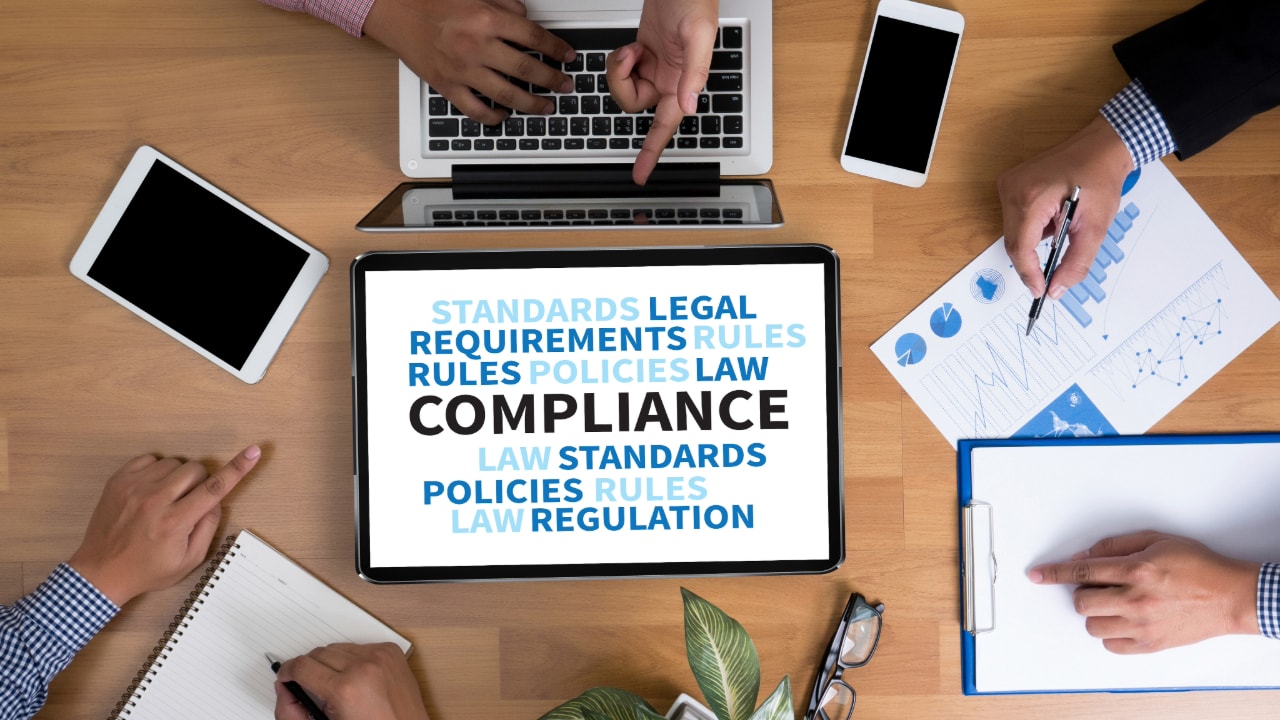FTC Safeguards Rule Requirements: What Every Organization Needs to Know
Feb 13, 2025
In an age where hackers don’t just steal data but sometimes hold entire companies hostage , data security isn’t a luxury—it’s a necessity. That’s exactly why the Federal Trade Commission (FTC) updated its Safeguards Rule in December 2021, tightening the compliance screws and making it clear that half-hearted security measures won’t cut it anymore. Organizations of all sizes—from financial institutions to service providers—are now under the microscope, and failure to comply could mean hefty fines, lawsuits, or public embarrassment. To avoid these consequences, firms must develop comprehensive security plans that include strategies to detect unauthorized access.
This article will guide you through the FTC Safeguards Rule requirements, the core principles behind risk management strategies, practical implementation steps, and the penalties you’ll want to avoid at all costs.
What Is the FTC Safeguards Rule? A Quick Refresher
Before we dive into the nuts and bolts, let’s make sure we’re all on the same page.
The FTC Safeguards Rule mandates that financial institutions and related organizations establish robust information security programs (ISPs) to protect customer data. This regulation extends to a broad range of organizations that engage in financial activities, including tax preparers, car dealerships, mortgage brokers, and others that handle sensitive consumer information and maintain customer information.
To comply, organizations must implement an ISP that aligns with their specific size, complexity, and nature of operations. This program should incorporate administrative, technical, and physical measures designed to protect consumer data. The rule also places a strong focus on accountability, requiring ongoing evaluations and updates to security protocols.
In 2023, the rule underwent significant revisions, broadening its scope and tightening its requirements. Key changes include the obligation to appoint a “Qualified Individual” responsible for managing the ISP, conducting periodic risk assessments, and enforcing stricter security controls. Non-compliance can lead to regulatory action, hefty fines, and reputational harm. Recent enforcement cases involving mortgage lenders and tax preparers highlight the severe financial and operational consequences of failing to meet these standards.
Goals and Objectives of the FTC Safeguards Rule

The primary goal of the FTC Safeguards Rule is to ensure that financial institutions, including CPA firms, implement and maintain robust information security programs to protect customer information. The objectives of the Rule are to:
-
Protect the security, confidentiality, and integrity of customer information: This is the cornerstone of the Safeguards Rule, ensuring that sensitive data is shielded from unauthorized access and breaches.
-
Prevent unauthorized access, data breaches, and identity theft: By mandating stringent security measures, the Rule aims to minimize the risk of incidents that could compromise customer information.
-
Foster trust between businesses and their customers: When customers know their data is secure, they are more likely to trust and engage with the business.
-
Provide a framework for businesses to follow: The Rule offers a clear set of guidelines to help financial institutions implement effective safeguards, ensuring they take appropriate measures to protect customer information.
The FTC Safeguards Rule achieves these objectives by requiring financial institutions to develop, implement, and maintain written information security programs that include administrative, technical, and physical safeguards. This comprehensive approach ensures that all aspects of data protection are covered, from policy development to practical implementation.
Who Needs to Comply with the FTC Safeguards Rule?
The FTC Safeguards Rule casts a wide net over organizations engaged in financial activities. But what exactly qualifies as a "financial institution" under this rule? Let’s break it down.
Examples of Financial Institutions
A "financial institution" isn’t limited to banks and credit unions. If your business significantly engages in financial activities, you’re likely on the hook for compliance. Here are some examples:
-
Retailers Issuing Proprietary Credit Cards
Retailers that extend credit by issuing their own credit cards directly to consumers are considered financial institutions. Extending credit is a financial activity, and offering proprietary credit cards means the retailer is significantly engaged in that activity. -
Automobile Dealerships Offering Long-Term Leases
Car dealerships leasing vehicles for more than 90 days on a non-operating basis qualify as financial institutions, given that leasing personal property for extended periods is a recognized financial activity. -
Appraisers of Real and Personal Property
Whether it’s real estate or personal property, appraisers fall under the definition of financial institutions because their appraisal work is classified as a financial activity. -
Specialized Career Counselors
Career counselors focusing on clients within financial organizations or finance-related departments are considered financial institutions due to their specialized financial advisory services. -
Check Printing and Sales Businesses
Companies that print and sell checks, even if it’s just one product line among many, are classified as financial institutions. -
Money Wiring Services
Businesses that regularly transfer money for consumers fall under this rule since transferring funds is a core financial activity. -
Check-Cashing Businesses
These businesses engage in exchanging money, directly placing them under the “financial institution” umbrella. -
Tax Preparation Services
Accountants and other tax prep services are considered financial institutions due to their involvement in financial advisory and preparation. -
Travel Agencies Connected to Financial Services
Agencies operating in conjunction with financial services are considered financial institutions. -
Real Estate Settlement Service Providers
Entities offering real estate settlement services are covered by the rule. -
Mortgage Brokers
Brokering loans is a financial activity, so mortgage brokers are squarely within the scope of the Safeguards Rule. -
Investment Advisory and Credit Counseling Services
Both investment advisors and credit counselors are engaged in financial activities, making them subject to compliance. -
Finders Connecting Buyers and Sellers
Businesses that act as “finders” by bringing buyers and sellers together for independently negotiated transactions are considered financial institutions.
What Doesn't Count as a Financial Institution?
Not every entity involved with money falls under the Safeguards Rule. Some organizations are explicitly excluded:
-
Entities Regulated by the Commodity Futures Trading Commission (CFTC)
If your financial activities are under the CFTC’s jurisdiction, you’re exempt. -
Federal Agricultural Mortgage Corporation and Farm Credit Institutions
Entities chartered under the Farm Credit Act of 1971 are not considered financial institutions under this rule. -
Congress-Chartered Securitization Entities
Institutions created by Congress specifically for securitizations or secondary market transactions are exempt—provided they don’t transfer nonpublic personal information beyond permitted exceptions. -
Entities Not Significantly Engaged in Financial Activities
Businesses that engage in financial activities but not as a primary part of their operations aren’t considered financial institutions.
Examples of Entities Not Significantly Engaged in Financial Activities
Some businesses handle money occasionally, but that doesn’t automatically make them financial institutions. Here are examples of what falls outside the rule:
-
Retailers with Occasional Credit Extensions
Stores offering “layaway” plans or deferred payments without issuing their own credit cards are not financial institutions. -
Businesses Accepting Third-Party Credit Cards
Accepting payment via cash, checks, or third-party credit cards doesn’t make a retailer a financial institution. -
Merchants Offering “Tabs”
Allowing customers to “run a tab” doesn’t qualify as significant financial activity. -
Grocery Stores Offering Check-Cashing Services
A grocery store cashing checks or giving cash back on purchases isn’t considered a financial institution under the Safeguards Rule.
Exemptions and Exceptions
While the FTC Safeguards Rule applies broadly, there are specific exemptions and exceptions for certain financial institutions:
-
Small Institutions: Financial institutions with fewer than 5,000 customers are exempt from some requirements, such as conducting risk assessments and implementing incident response plans. This recognizes the limited resources of smaller entities while still holding them accountable for basic data protection.
-
Regulatory Overlap: Institutions subject to other federal or state regulations, like the Gramm-Leach-Bliley Act, may be exempt from certain requirements of the Safeguards Rule. This avoids redundancy and ensures a streamlined compliance process.
-
Third-Party Certification: Financial institutions certified by a third-party auditor as having robust information security controls may also be exempt from certain requirements. This provides an incentive for institutions to seek external validation of their security measures.
However, these exemptions do not relieve financial institutions of their fundamental obligation to protect customer information and comply with the core principles of the FTC Safeguards Rule.
Bottom Line
If your business significantly engages in financial activities, you likely need to comply with the FTC Safeguards Rule. But if your interaction with financial transactions is incidental or minimal, you might just dodge the regulatory bullet—this time. When in doubt, consult with an expert to ensure you’re not inadvertently out of compliance.
Breaking Down the Core Requirements of the FTC Safeguards Rule

The FTC Safeguards Rule isn’t just a suggestion—it’s a detailed roadmap for securing customer information. Here’s a breakdown of the core requirements and the regulations behind them.
1. Designate a "Qualified Individual" to Oversee Information Security (16 CFR § 314.4(a))
You need to appoint a qualified individual (think CISO or equivalent) responsible for developing, implementing, and maintaining your information security program (ISP). This person must report directly to senior management, ensuring accountability is front and center—not buried in the IT department.
If your organization is small, outsourcing this role to a managed service provider is acceptable under the rule—just ensure they understand your unique risks and responsibilities.
Best Practice: Choose someone with both technical expertise and a solid understanding of your business operations to bridge the gap between IT and executive leadership.
2. Develop the ISP Using a Risk-Based Approach (16 CFR § 314.4(b))
The FTC expects you to tailor your ISP based on a thorough risk assessment. This involves evaluating both internal and external threats to customer data, as well as the effectiveness of existing safeguards. A well-designed ISP should address the unique risks and vulnerabilities specific to your organization.
-
Identifying potential risks to customer data
-
Evaluating the effectiveness of existing safeguards
-
Assessing the potential impact of various threats
Regular updates to your risk assessments are essential, especially with evolving threats like AI-driven cyberattacks and new regulatory requirements.
Best Practice: Schedule risk assessments annually, or more frequently if significant changes occur in your IT environment or threat landscape.
3. Implement Appropriate Controls to Address Identified Risks (16 CFR § 314.4(c))
Once risks are identified, appropriate safeguards must be deployed to minimize them. These controls should align with the specific threats uncovered during the risk assessment process.
-
Access Controls: Restrict sensitive data based on job roles
-
Encryption: Protect data in transit and at rest
-
Multi-Factor Authentication (MFA): Add extra layers of protection
-
Secure Development Practices: Especially for in-house applications
These measures not only protect customer information but also enhance overall organizational resilience against potential threats.
Best Practice: Regularly review and update your safeguards to adapt to new threats, ensuring your security measures evolve alongside technology.
4. Regularly Monitor, Review & Test the Effectiveness of Security Controls (16 CFR § 314.4(d))
Security controls must be continuously monitored and tested to ensure they remain effective against emerging threats. Regular reviews help identify gaps and areas for improvement, keeping your defenses up-to-date.
-
Penetration Testing: Simulate real-world attacks to spot vulnerabilities
-
Vulnerability Scans: Regularly check for weak spots
-
Log Reviews: Monitor access logs for suspicious activity
These proactive measures help identify and mitigate vulnerabilities before they can be exploited.
Best Practice: Use a combination of automated tools and manual testing to get a comprehensive view of your security posture.
5. Implement Policies, Procedures, & Security Training (16 CFR § 314.4(e))
A strong information security program requires comprehensive policies and procedures, coupled with regular employee training. Staff should be equipped to recognize and respond to security threats effectively.
-
Recognizing phishing attempts
-
Proper data handling procedures
-
Reporting suspicious activities
Interactive, role-specific training ensures that all employees understand their responsibilities in protecting sensitive information.
Best Practice: Incorporate real-world scenarios and hands-on exercises in your training programs to keep employees engaged and prepared.
6. Manage Your Service Providers (16 CFR § 314.4(f))

Third-party vendors can introduce significant security risks. The FTC requires organizations to manage these risks by thoroughly vetting service providers and ensuring they adhere to appropriate security practices. It is essential to monitor service providers to ensure they maintain adequate safeguards and conduct periodic assessments to evaluate their security measures.
-
Vet service providers’ security practices
-
Include data protection clauses in contracts
-
Monitor their compliance regularly
Effective management of service providers is crucial for maintaining the integrity of your information security program.
Best Practice: Establish a vendor management program that includes regular audits and compliance reviews.
7. Continually Improve the ISP (16 CFR § 314.4(g))
An effective ISP is not static. Continuous improvement is necessary to adapt to new threats, technologies, and business changes. Regular reviews and updates ensure that your security measures remain robust and relevant.
-
Regularly review and update your ISP
-
Adapt to new threats and technologies
-
Incorporate lessons learned from incidents and audits
This proactive approach fosters a culture of ongoing vigilance and resilience.
Best Practice: Create a feedback loop where security incidents and audit results directly inform ISP updates and improvements.
8. Establish an Incident Response Plan (16 CFR § 314.4(h))
No security program is foolproof. That’s why the FTC requires organizations to have a detailed incident response plan. This plan outlines the steps to take when a security event, such as a security breach, occurs, minimizing damage and facilitating a swift recovery.
-
How to detect and report incidents
-
Containment and eradication strategies
-
Post-incident analysis and corrective actions
A well-prepared response plan ensures that your organization can quickly and effectively handle security incidents.
Best Practice: Conduct regular incident response drills to ensure your team is ready to act swiftly and effectively in the event of a breach.
8.5. Breach Notification Requirements
In the unfortunate event of a security breach, the FTC Safeguards Rule mandates that financial institutions notify both the FTC and affected customers. The breach notification requirements are as follows:
-
Timely Notification: Financial institutions must notify the FTC as soon as possible, but no later than 30 days after discovering the breach. This prompt action helps mitigate the impact and allows for a coordinated response.
-
Detailed Reporting: The notification to the FTC must be made using the online reporting form and include:- A description of the breach
-
The number of customers affected
-
The types of customer information involved
-
Steps taken to respond to the breach
-
Measures implemented to prevent future breaches
Additionally, financial institutions must notify affected customers in writing, unless it is determined that the breach is unlikely to result in harm. This transparency ensures that customers are aware of potential risks and can take necessary precautions to protect themselves.
9. Provide Periodic Written Performance Reports to the Board (16 CFR § 314.4(i))
Transparency and accountability are critical components of an effective information security program. Regular reports to senior leadership ensure that decision-makers are informed about the status of the ISP and any emerging risks.
-
The status of the ISP
-
Identified risks and mitigation efforts
-
Compliance performance metrics
Leadership buy-in is essential for securing the necessary resources and fostering a culture of security throughout the organization.
Best Practice: Present security metrics in a clear, concise manner that aligns with business goals to ensure leadership understands the value of your security efforts.
Implementation and Deadline
The FTC Safeguards Rule sets a clear deadline for financial institutions to implement and maintain their written information security programs by June 9, 2023. Key requirements include:
-
Developing and Implementing ISPs: Financial institutions must create comprehensive information security programs that encompass administrative, technical, and physical safeguards.
-
Conducting Risk Assessments: Regular risk assessments are essential to identify and address potential vulnerabilities in the security framework.
-
Implementing Incident Response Plans: Institutions must have a written incident response plan to effectively manage and mitigate the impact of security events.
-
Providing Security Awareness Training: Employees must receive ongoing training to recognize and respond to security threats, ensuring a vigilant and informed workforce.
-
Monitoring Service Providers: Institutions must ensure that third-party service providers adhere to robust security practices, minimizing external risks.
-
Detecting Unauthorized Access: Continuous monitoring and detection mechanisms are crucial to identify and respond to unauthorized access to customer information.
Failure to comply with the FTC Safeguards Rule by the deadline can result in significant penalties, including fines and reputational damage. Therefore, it is imperative for financial institutions to prioritize compliance and take proactive steps to safeguard customer information.
Penalties for Non-Compliance: What’s at Stake?
Ignoring or failing to comply with the FTC Safeguards Rule isn’t just risky—it can be financially devastating and even criminal. Here’s what’s at stake:
-
Monetary Penalties: Businesses can face fines of up to $100,000 per violation. This can quickly add up, especially in the event of multiple compliance failures.
-
Personal Liability for Leadership: Executives and leaders aren’t off the hook. They can be fined up to $10,000 per violation, holding them personally accountable for the organization’s non-compliance.
-
Criminal Penalties: In extreme cases, non-compliance can lead to up to 5 years in prison for individuals involved in serious violations.
-
Additional FTC Fines: The FTC can impose additional penalties of up to $50,120 per violation, and these fines can stack up quickly, especially if multiple violations are found.
-
Lawsuits: A data breach or compliance failure can lead to legal action from affected customers, business partners, or regulatory bodies.
-
Reputational Damage: Public breaches often lead to lost customers and damaged trust, which can be even more costly than the fines themselves.
Case Study Highlight: The FTC’s enforcement action against Uber in 2018 for its mishandling of a data breach is a stark reminder that cover-ups and lax security practices won’t go unnoticed. Uber faced significant fines and reputational damage, proving that the cost of non-compliance far outweighs the investment in proper safeguards. Similarly, Facebook’s 2019 settlement with the FTC resulted in a $5 billion fine due to repeated privacy violations and failure to adhere to a previous consent decree. This landmark penalty underscores how severely the FTC can penalize organizations that neglect data protection and compliance obligations.
By understanding these penalties, organizations can better appreciate the importance of proactive compliance with the FTC Safeguards Rule. It’s not just about avoiding fines—it’s about protecting your business, your customers, and your leadership from serious consequences.
Best Practices for Achieving and Maintaining Compliance

To ensure sustained compliance with industry regulations and safeguard sensitive information, organizations must implement strategic practices that integrate security throughout their operations. Here are key best practices for achieving and maintaining compliance:
-
Building a Security-First Culture
Security should be more than just an IT concern—it must be a core business function. A “security-first” mindset ensures that data protection is embedded into daily operations, with all employees actively participating in safeguarding sensitive information. Clear policies, regular training, and leadership commitment are essential to maintaining a strong security culture.
-
Leveraging Automation and Vendor Security Reviews
Automating security monitoring helps detect and respond to potential threats in real time, reducing human error and response time. Additionally, third-party vendors can introduce significant security risks, making it crucial to regularly assess their security practices to ensure compliance with industry standards.
-
Managing Third-Party Risks Through Vendor Security Reviews
Third-party service providers play a critical role in business operations, but they can also introduce significant security risks. Regularly reviewing service provider arrangements ensures that their systems and processes align with industry standards and compliance requirements.
A thorough vendor security assessment should include evaluating their data protection policies, encryption methods, access controls, and incident response plans. Organizations should also establish clear contractual obligations for security compliance and require periodic security audits to minimize potential vulnerabilities.
By proactively monitoring vendor security, businesses can reduce the risk of data breaches, maintain regulatory compliance, and protect sensitive customer information.
-
Staying Ahead of Emerging Threats
Cyber threats are constantly evolving, and businesses must adapt to keep their defenses strong. Staying informed about new attack methods and continuously updating security protocols will help organizations remain resilient against ever-changing risks that could undermine existing security measures.
How Input Output Supports FTC Safeguards Rule Compliance
At Input Output, we recognize the challenges organizations face in maintaining compliance with the FTC Safeguards Rule. Our comprehensive information security solutions are designed to simplify compliance while strengthening data protection.
Input Output Solutions Include:
-
WISP (Written Information Security Program): A full set of policies, procedures, forms, and walkthroughs to help clients achieve full compliance with the FTC Safeguards Rule. This comprehensive package ensures every aspect of your information security program meets regulatory standards.
-
Gap Assessments: We perform thorough information security audits to identify any gaps in your current practices relative to the FTC Safeguards Rule. Our assessments provide clear, actionable recommendations to close compliance gaps efficiently.
-
Cybersecurity Assessments: We help clients manage their bi-annual vulnerability scans and annual penetration testing requirements. Our cybersecurity assessments ensure your systems are resilient against evolving threats and compliant with regulatory expectations.
-
vCISO (Virtual Chief Information Security Officer): We step in to help develop, implement, and fully manage your FTC Safeguards Rule-compliant ISP (Information Security Program). With our vCISO service, you can focus on growing your business while we handle your security and compliance needs.
Our comprehensive information security solutions are designed to simplify compliance while safeguarding taxpayer data and strengthening data protection.
By partnering with Input Output, organizations can achieve full compliance with the FTC Safeguards Rule while enhancing overall data protection. Our solutions reduce the administrative burden of compliance, providing firms with the confidence and security they need to thrive in today’s digital landscape.
Conclusion: Treat Compliance as an Ongoing Process
Compliance with the FTC Safeguards Rule isn’t a one-time project—it’s a long-term commitment to protecting sensitive customer information. While the requirements may seem extensive, they’re grounded in common sense: identify risks, implement safeguards, and test them regularly. Organizations that view compliance as an opportunity to enhance overall security (rather than just another regulatory burden) will be better positioned to fend off cyberattacks and maintain customer trust.
Remember, compliance isn’t just about avoiding fines—it’s about staying ahead of the ever-evolving threats lurking in the digital world. If you’re still unsure where to start, consider conducting a comprehensive gap analysis or partnering with experts who can guide you through the process.
At the end of the day, compliance and security go hand in hand—protecting data means protecting your entire organization.
STAY INFORMED
Subscribe now to receive the latest expert insights on cybersecurity, compliance, and business management delivered straight to your inbox.
We hate SPAM. We will never sell your information, for any reason.


